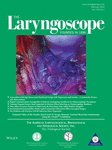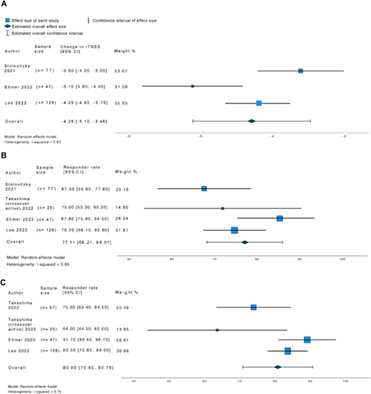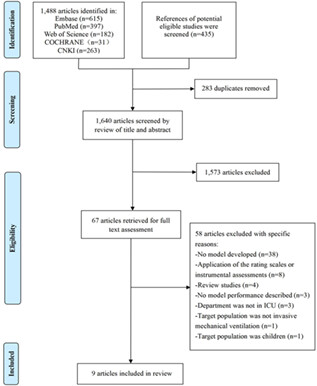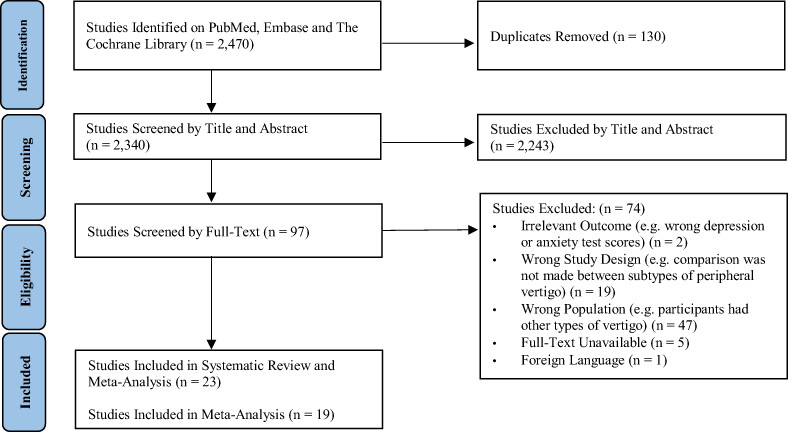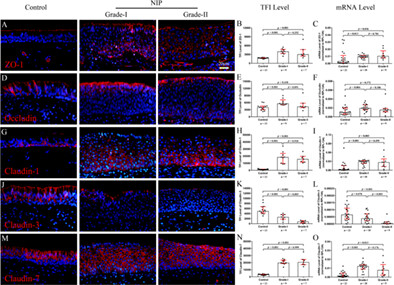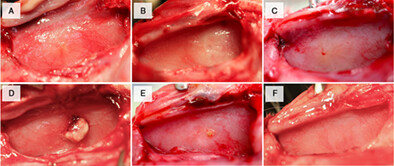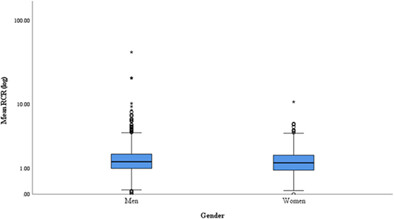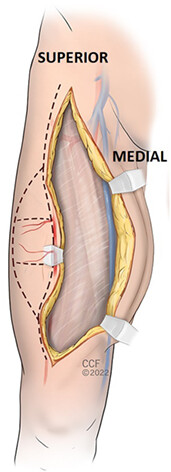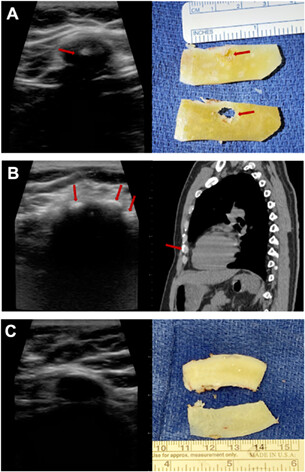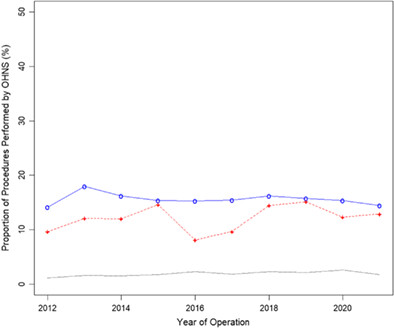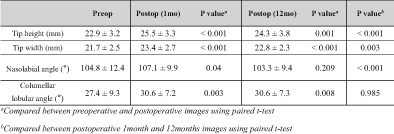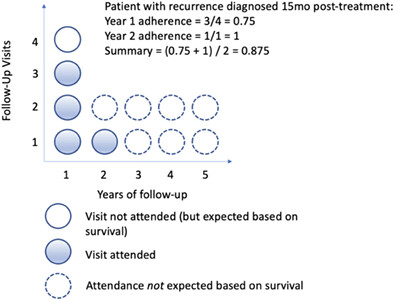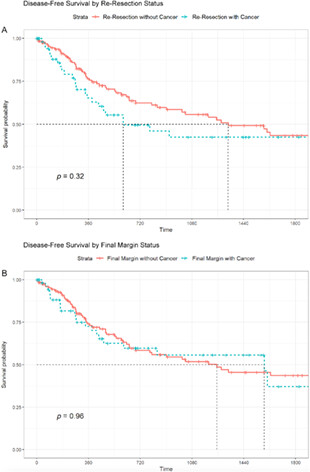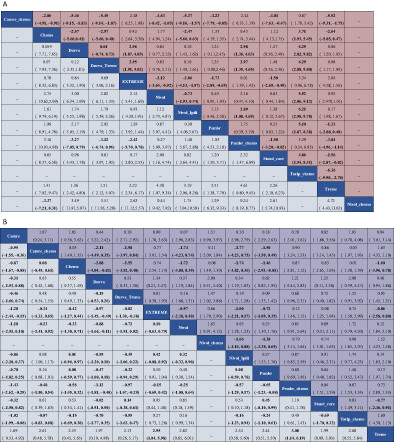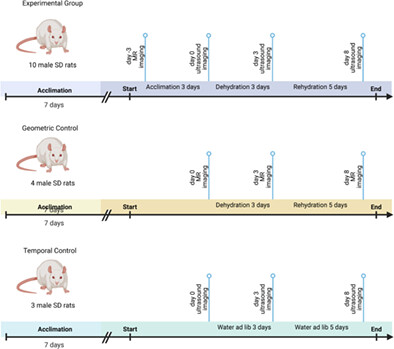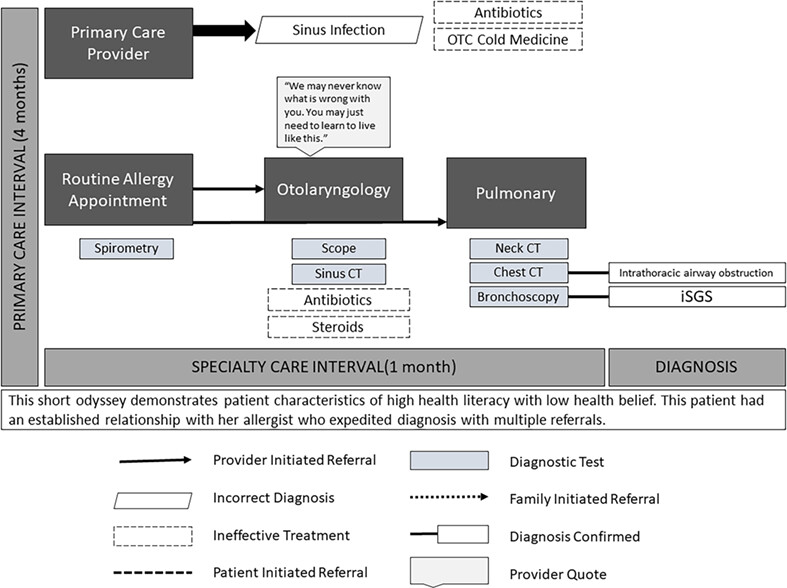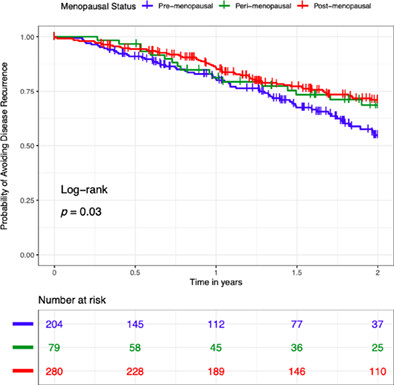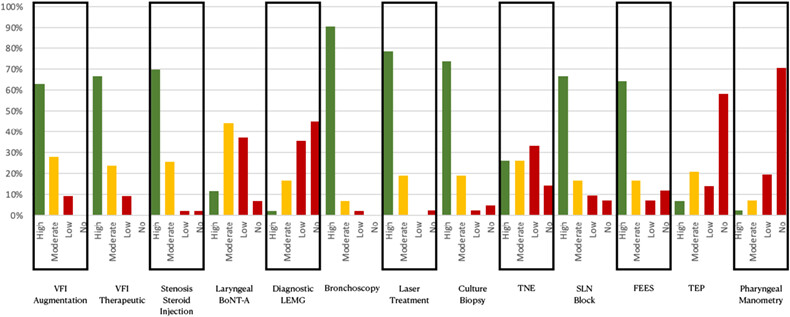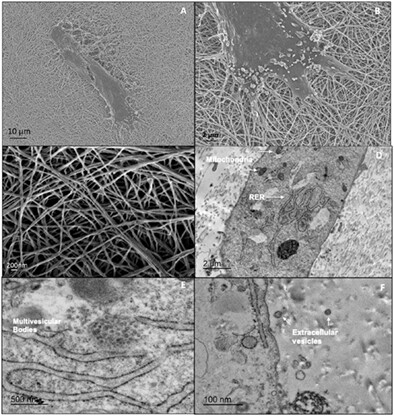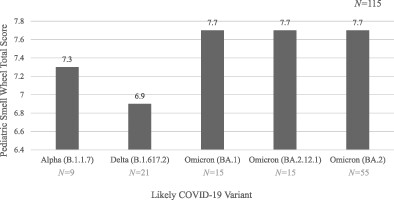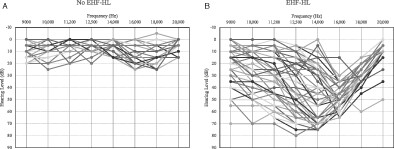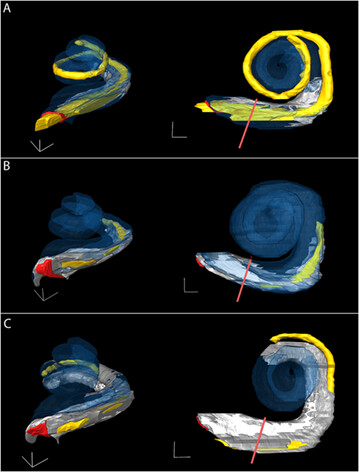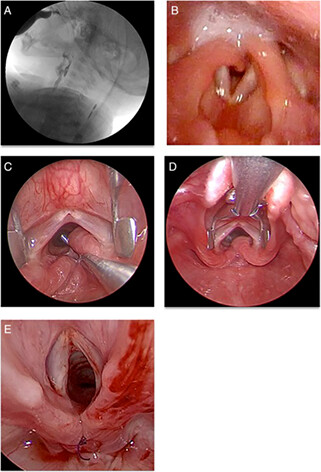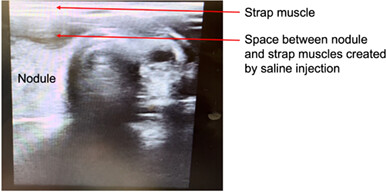Journal list menu
Export Citations
Download PDFs
Issue Information
Triological Society Best Practice
Is Elexacaftor/Tezacaftor/Ivacaftor Effective in Treating Sinonasal Disease in Patients with Cystic Fibrosis?
- Pages: 501-503
- First Published: 07 August 2023
Is Hyperbaric Oxygen Effective in the Treatment of Sudden Sensorineural Hearing Loss?
- Pages: 504-506
- First Published: 02 September 2023
Systematic Reviews
Radiofrequency Neurolysis of the Posterior Nasal Nerve: A Systematic Review and Meta-Analysis
- Pages: 507-516
- First Published: 29 July 2023
Prediction Models for Dysphagia in Intensive Care Unit after Mechanical Ventilation: A Systematic Review and Meta-analysis
- Pages: 517-525
- First Published: 06 August 2023
Association of Benign Paroxysmal Positional Vertigo with Depression and Anxiety—A Systematic Review and Meta-Analysis
- Pages: 526-534
- First Published: 10 August 2023
Historical Review
Historical Therapies for Suspected Autonomic Dysregulation in Meniere's Disease
- Pages: 535-542
- First Published: 16 August 2023
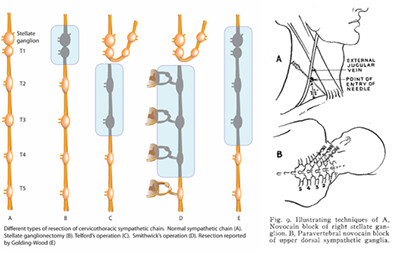
As knowledge of human anatomy and the autonomic system advanced over the late 19th and early 20th centuries, theories of autonomic dysregulation were applied to a broad range of conditions including Meniere's Disease, a vestibular disorder whose etiology is poorly understood. The aim of this manuscript is to examine how speculative belief in the autonomic system as the cause of Meniere's led to the adoption of invasive surgical procedures and medical treatment that are still prescribed today.
Rapid Communication
Semaglutide in Patients Undergoing Anesthesia for Otolaryngologic Procedures
- Pages: 543-544
- First Published: 01 December 2023
Allergy, Rhinology, and Immunology
Original Reports
Prolonged Itraconazole Therapy as Sole Treatment for Patients with Allergic Fungal Rhinosinusitis
- Pages: 545-551
- First Published: 28 June 2023
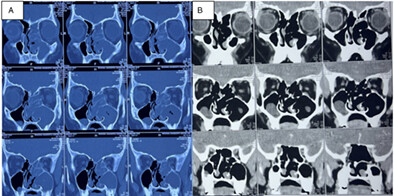
Itraconazole can be given as sole therapy for prolonged period of time to patients with allergic fungal rhinosinusitis who do not wish to take steroids or in whom steroids are contraindicated and in those who are waiting for surgery. It can result in symptomatic and radiological improvement and reduce the burden of disease. However, surgery still remains the definitive modality of treatment.
Epithelial Tight Junction Anomalies in Nasal Inverted Papilloma
- Pages: 552-561
- First Published: 22 June 2023
Nasal Packing Materials and Placement Duration on Wound Healing in Nasal Mucosa: An Animal Study
- Pages: 562-568
- First Published: 06 July 2023
Hypotensive Levels on Endoscopic Sinus Surgery Visibility: A Randomized Non-Inferiority Trial
- Pages: 569-576
- First Published: 14 July 2023
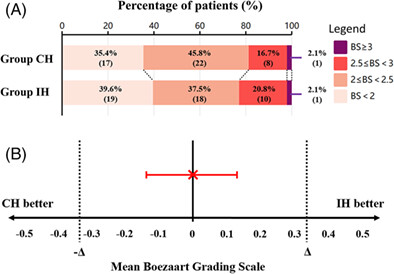
In endoscopic sinus surgery, both levels of intraoperative hypotension (62.2 ± 2.3 mmHg vs. 74.0 ± 2.8 mmHg), combined with position adjustment and low-concentration adrenaline to constrict nasal mucosal blood vessels, provided acceptable surgical conditions, and there was no difference in the amount of bleeding or blood loss rate between the two groups. In addition, the individualized hypotension strategy was associated with lower blood lactate levels and more satisfactory awakening quality.
Bronchoesophagology
Original Reports
Efficacy of Systemic Bevacizumab for Recurrent Respiratory Papillomatosis with Pulmonary Involvement
- Pages: 577-581
- First Published: 20 July 2023
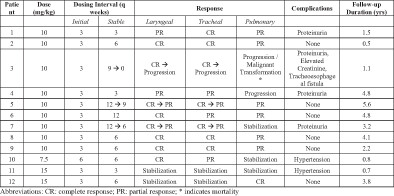
Pulmonary extension is a rare but morbid manifestation of recurrent respiratory papillomatosis with limited therapeutic options. In this study, we show that systemic bevacizumab is effective in stabilizing progression in even the most severe cases of recurrent respiratory papillomatosis, with both a dramatic reduction in laryngeal and tracheal disease as well as a stable-to-partial response of pulmonary involvement in a majority of patients.
Sociodemographic Disparities in Tracheostomy Timing and Outcomes
- Pages: 582-587
- First Published: 16 August 2023
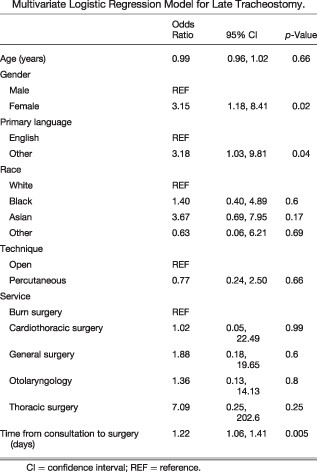
Despite an association between earlier tracheostomy timing and shorter hospital length of stay, non-English speaking and female patients are more likely receive late tracheostomy. Standardized protocols for tracheostomy timing may help address bias in the referral and execution of tracheostomy and reduce unnecessary hospital days.
Case Report
Single-Port Robotic Removal of a Submucosal Foreign Body in the Distal Hypopharynx
- Pages: 588-591
- First Published: 13 July 2023
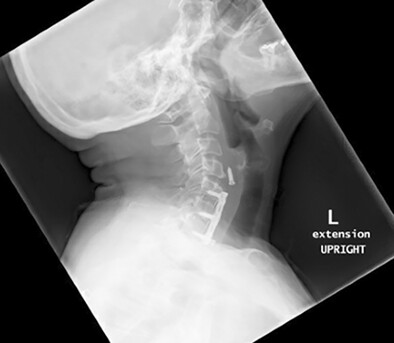
We describe an illustrative case of one patient with a retained screw from spinal hardware embedded in the posterior hypopharyngeal wall. After multiple failed attempts at removal, an otolaryngology team used the da Vinci single-port robot via a transoral approach to successfully remove the foreign body.
Comprehensive Otolaryngology
Original Reports
The Relative Citation Ratio: An Impartial Assessment of Productivity in Academic Otolaryngologists
- Pages: 592-599
- First Published: 11 July 2023
Training Program Factors Most Important to Women When Selecting an Otolaryngology Residency
- Pages: 600-606
- First Published: 08 August 2023
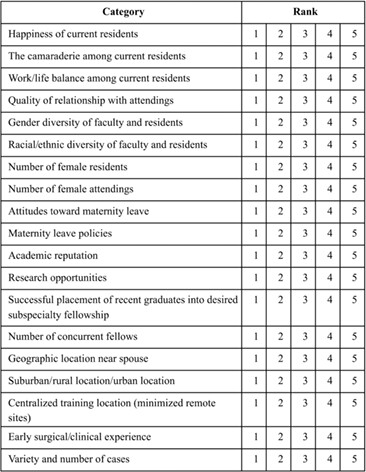
Current female otolaryngology resident physicians were surveyed to identify the most and least important factors they considered when choosing a residency program. The most important factors were, in fact, non-gender-related and reported to be camaraderie and happiness of current residents and the variety of clinical cases.
Surgical Fires Involving Alcohol-Based Preparation Solution, 1991–2020
- Pages: 607-613
- First Published: 12 June 2023
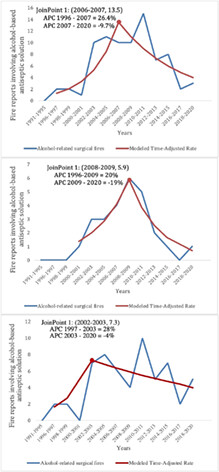
From 1996 to 2006, there was a 26.4% increase in fires followed by a 9.7% decrease in fires from 2007 to 2020 involving alcohol-based skin preparations. Warning label updates from 2006 to 2012 and increased awareness of the risks of these preparations likely contributed to the decrease in surgical fires.
Suture Stenting After Sialendoscopy: A Novel Technique That Reduces Risk of Recurrent Parotitis
- Pages: 614-621
- First Published: 20 June 2023
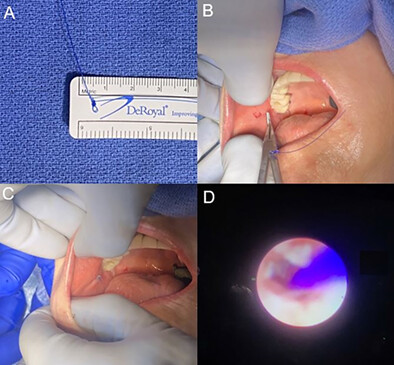
Sialendoscopy is an effective procedure for relieving symptoms of sialadenitis, but recurrence related to post-treatment scarring is a problem. We report a new suture stent for use after sialendoscopy that can reduce rates of symptom recurrence in patients with sialadenitis. This stent is low cost and widely available across institutions for adoption.
Environmental Impact of Adult Tonsillectomy: Life Cycle Assessment and Cost Comparison of Techniques
- Pages: 622-628
- First Published: 08 July 2023
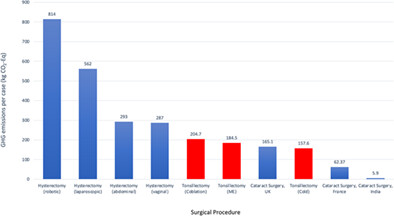
Fifteen consecutive adult tonsillectomy surgeries were prospectively randomized to one of three tonsillectomy techniques—cold, monopolar electrocautery, or Coblation—and their environmental impact and cost analyzed comprehensively using life cycle assessment. Cold technique was found to have the lowest cost and environmental impact, and statistical significance was confirmed for this effect when evaluating the impact of disposable surgical equipment. High-yield areas for intervention to reduce the environmental impact of adult tonsillectomy included disposable surgical equipment and anesthetic medications.
Disruption Index in Otolaryngology: Uncovering a Bibliometric History of a Rapidly Evolving Field
- Pages: 629-636
- First Published: 19 July 2023
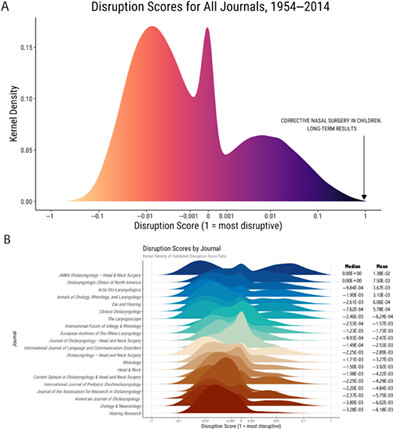
As the literature grows in the field of otolaryngology, there is an increased need to surface those which have significantly altered the course or developed the field. We applied a recently developed bibliometric index (Disruption Index) to the otolaryngology literature. Herein, we report the publications with the highest disruption index and those with significant overlap with other bibliometric indices.
Underrepresented in Medicine Student Perspectives on the Selection of a Summer Research Program
- Pages: 637-644
- First Published: 18 July 2023
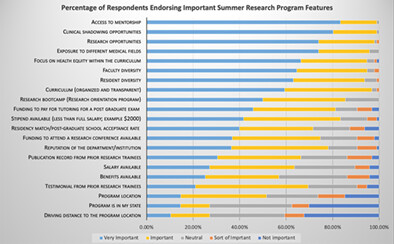
This survey-based study highlights URiM undergraduate student perspectives on summer research programs to provide feedback to otolaryngology departments that offer these programs. Students value, in order, mentorship, opportunities for clinical shadowing, and research opportunities. These perspectives may help to bolster programs aiming to support URiM students.
E-only Article
Letters to the Editor
In Reference to Increasing Pedicle Reach with Musculocutaneous Perforator Dissection in Anterolateral Thigh Free Flaps
- Page: E6
- First Published: 24 October 2023
In Response to Increasing pedicle reach with musculocutaneous perforator dissection in anterolateral thigh free flaps
- Page: E7
- First Published: 24 October 2023
Cranial Base
Case Report
CSF-Venous Fistula of the Clival Skull Base: A Unique Case Study and Literature Review
- Pages: 645-647
- First Published: 08 September 2023
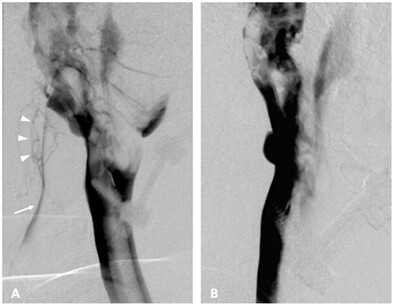
A 12-year-old male, who had suffered a motor vehicle trauma seven years prior, was diagnosed with a rare cerebrospinal fluid (CSF)-venous fistula (CVF) causing orthostatic, exertional headache and intracranial hypotension. The CVF was treated via a unique trans-nasal endoscopic approach after MRI and CT imaging failed to detect it, but digital subtraction myelography (DSM) confirmed the diagnosis. This case suggests the need for considering CVFs in the differential diagnosis of spontaneous intracranial hypotension, and the potential utility of DSM in diagnosing CVFs when traditional radiology results are inconclusive.
Facial Plastic-Reconstructive Surgery
Case Report
Greater Saphenous Vein Graft Harvest from Anterolateral Thigh Free Flap Incision: A Novel Technique
- Pages: 648-650
- First Published: 12 June 2023
How I Do It
Costal Cartilage Considerations: Novel Use of Handheld Ultrasound Device in Rhinoplasty
- Pages: 651-653
- First Published: 10 June 2023
Original Reports
Supraorbital Rim and Roof Reconstruction with Vascularized Fascia Lata and Autogenous Rib Graft
- Pages: 654-658
- First Published: 15 June 2023
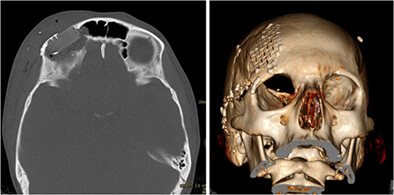
Reconstruction of complex defects involving the supraorbital rim and orbital roof and adjacent skull base defects present a challenge to the reconstructive challenge. We describe a novel technique of vascularized fascia lata free flap with osseous rib grafting to reconstitute the bony structures and provide a barrier between sinonasal and intracranial cavities and the orbit.
Incidence and Reimbursement Trends for Facial Fracture Repair in the Elderly: A Medicare Analysis
- Pages: 659-665
- First Published: 27 June 2023
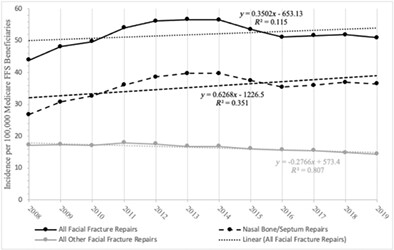
Utilizing the 2000–2019 Medicare Fee-For-Services dataset, this article found that the incidence of facial fracture repair among the elderly has increased by over 93%, which was largely driven by nasal bone/septal fracture repairs. While this resulted in an increase in Medicare physician nominal payments from $2.6 million to $4.1 million, when adjusted for inflation, average reimbursement decreased 44.1% per procedure. These results have important implications as the population continues to age.
Increasing Pedicle Reach with Musculocutaneous Perforator Dissection in Anterolateral Thigh Free Flaps
- Pages: 666-670
- First Published: 05 July 2023
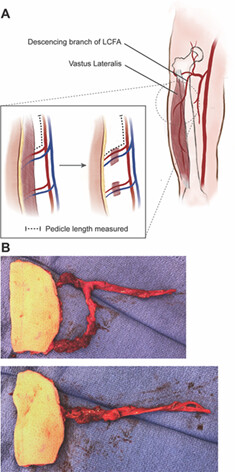
Musculocutaneous perforator dissection during anterolateral thigh free flap harvest can increase the mean pedicle length by 5.2 cm. This additional length gained can be particularly helpful in reconstructions in patients with previously surgically or radiation-treated necks with limited recipient vessels available for anastomosis.
National Trends of Otolaryngology Involvement in Cleft Surgical Management over 10-Years
- Pages: 671-677
- First Published: 14 June 2023
Changes in Nasal Tip Aesthetics Over Time Following Asian Tip Plasty
- Pages: 678-683
- First Published: 15 June 2023
Routine Contrasted Chest CT Accurately Identifies Anatomic Variations of the Proximal Subscapular System
- Pages: 684-687
- First Published: 18 July 2023
Outcomes of Head and Neck Free Tissue Transfer in Renal Failure Patients
- Pages: 688-694
- First Published: 14 July 2023
Head and Neck
Original Reports
Outcomes Following Treatment for Carotid Blowout in Head and Neck Cancer Patients
- Pages: 695-700
- First Published: 18 July 2023
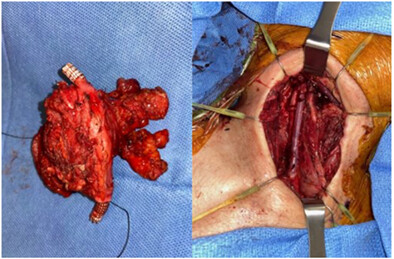
Patients with head and neck cancer and who received interventional radiology treatment for carotid blowout were included to determine outcomes after interventional radiology treatment of carotid blowout. The majority of carotid blowout occurs within 6 months of surgery or radiation and many who survived died of cancer progression or medical illness. Carotid bypass with flap coverage may be a worthwhile treatment for carotid blowout and should be considered as an adjunct to endovascular treatment.
Early Improved Functional Outcomes in Head and Neck Cancer Patients with Primary Tumor Detection
- Pages: 701-707
- First Published: 18 July 2023
Value of Adherence to Posttreatment Follow-Up Guidelines for Head and Neck Squamous Cell Carcinoma
- Pages: 708-716
- First Published: 26 July 2023
How Often is Cancer Present in Oral Cavity Re-resections After Initial Positive Margins?
- Pages: 717-724
- First Published: 16 August 2023
Frozen Section Timeout: Pilot Study to Reconcile Margins Using 3D Resected Specimen and Defect Scans
- Pages: 725-731
- First Published: 19 July 2023
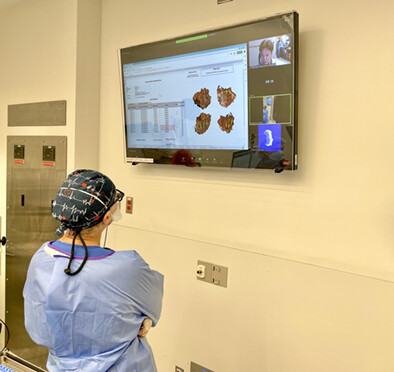
We instituted a “frozen section timeout” that centers around visualization of the paired resection specimen and surgical defect—facilitating effective, bidirectional exchange of information between surgeon and pathologist. Twenty-six frozen section timeouts were conducted intraoperatively. During the timeout, activities were halted, critical information was shared and documented, and annotated specimen and defect scans were displayed—clearly demonstrating the at-risk margins and the corresponding location and breadth of supplemental margins harvested.
Implementation and Outcomes of ERAS Protocol for Major Oncologic Head and Neck Surgery
- Pages: 732-740
- First Published: 19 July 2023
5-Aminolevulinic Acid Fluorescence-Guided Surgery in Head and Neck Squamous Cell Carcinoma
- Pages: 741-748
- First Published: 04 August 2023
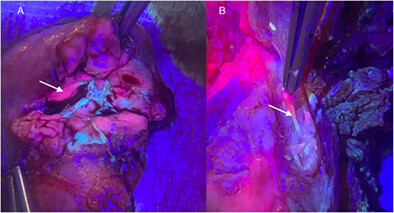
5-ALA induces intraoperative fluorescence of squamous cell carcinoma, identifying positive margins, perineural invasion, and metastatic nodal disease. While no conclusions can about safety of this drug in the head and neck cancer population, our study parallels the extensive safety data in the neurosurgical literature.
Immune Checkpoint Inhibitors Serve as the First-Line Treatment for Advanced Head and Neck Cancer
- Pages: 749-761
- First Published: 23 August 2023
Case Report
Adenoidectomy Due to Hyperplasia of Adenoids. Treponema Pallidum as a Potential Causative Pathogen
- Pages: 762-763
- First Published: 19 June 2023
E-only Article
Letters to the Editor
In Reference to Otolaryngologic Side Effects After COVID-19 Vaccination
- Page: E8
- First Published: 08 November 2023
In Response to Otolaryngologic Side Effects After COVID-19 Vaccination
- Page: E9
- First Published: 08 November 2023
Laryngology
Original Reports
Cell-Based Outer Vocal Fold Replacement Both Treats and Prevents Vocal Fold Scarring in Rabbits
- Pages: 764-772
- First Published: 19 August 2023
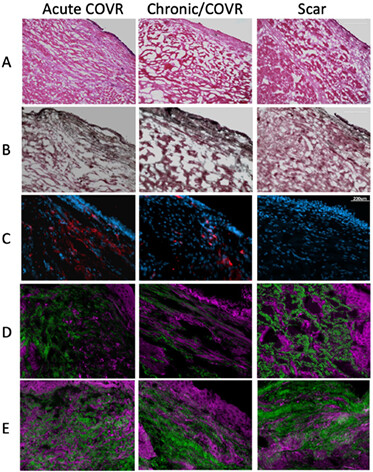
This objective of this study is to determine if a cell-based outer vocal fold replacement (COVR) effectively restores vocal fold (VF) function when applied to existing scar. In a rabbit model, COVR implantation in both acutely injured and chronically scarred VFs demonstrate persistence of implanted cells, restored tissue biomechanics, and increased hyaluronic acid content.
Laryngological Complaint Prevalence in Hypermobile Ehlers-Danlos or Hypermobility Spectrum Disorders
- Pages: 773-778
- First Published: 19 August 2023
In Vivo Visualization and Quantification of Rat Laryngeal Blood Supply After Hydration Challenge
- Pages: 779-785
- First Published: 16 August 2023
Method for Collecting Single Epithelial Cells from the Mouse Larynx
- Pages: 786-794
- First Published: 21 August 2023
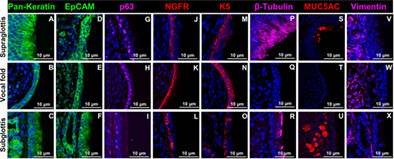
We present a novel approach to harvest epithelial cells from the mouse larynx using a dental brush. For forthcoming studies, these cells will be acquired following laryngeal injury induced by inhalation or other challenges and evaluated through downstream cellular and molecular assays, such as scRNA-seq, protein analyses, and cell-culture-based experiments.
Management of Idiopathic Vocal Process Granuloma: A Survey of Academic Laryngologists
- Pages: 795-802
- First Published: 21 August 2023
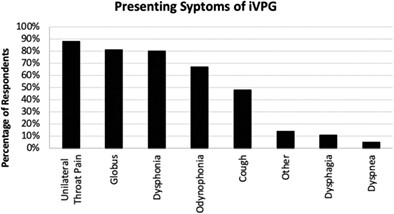
This study surveyed idiopathic vocal process granuloma management by academic laryngologists in the United States. Though no gold standard treatment exists, there are many common opinions about etiology and management. This survey serves to provide guidance for further investigation and management of vocal process granuloma.
Environmental Sustainability: Waste Audit Comparison Operating Roomand In-Office Laryngeal Surgery
- Pages: 803-806
- First Published: 02 September 2023
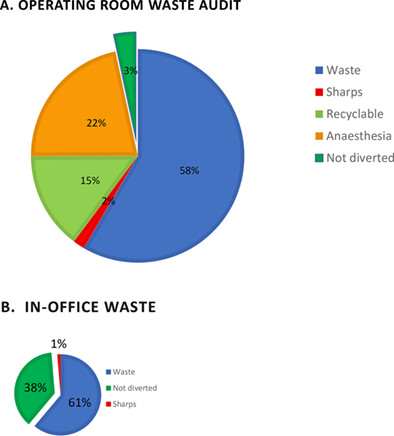
Comparison waste audit was conducted between in office laryngeal laser surgery and traditional operating room laser microlaryngoscopy for RRP. The waste audit demonstrated that in-office procedures have 13% of the total waste generated compared to in the operating room cases. Opportunities for further landfill diversion were also identified in our institutional practices.
A Pilot Study of Decellularized Cartilage for Laryngotracheal Reconstruction in a Neonatal Pig Model
- Pages: 807-814
- First Published: 02 September 2023
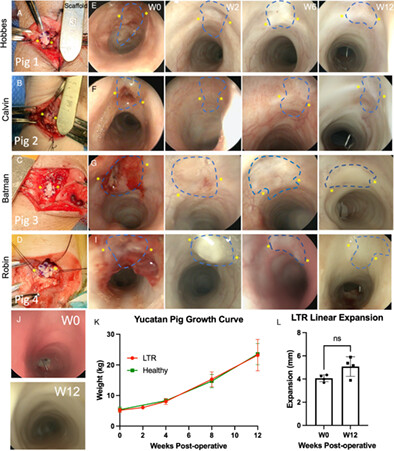
This study engineered a decellularized, channel-laden xenogeneic cartilage graft that was tested in a proof-of-concept, first-of-its-kind neonatal porcine laryngotracheal reconstruction (LTR) model. After LTR, the decellularized graft showed significant tissue integration, airway expansion, and neocartilage formation. Our neonatal porcine LTR model coupled with decellularized cartilage graft technology is a novel approach to tissue-engineered pediatric LTR and sets the stage for “off-the-shelf” graft options.
Navigating Pathways to Diagnosis in Idiopathic Subglottic Stenosis: A Qualitative Study
- Pages: 815-824
- First Published: 23 September 2023
Association between Estrogen Exposure and Idiopathic Subglottic Stenosis
- Pages: 825-830
- First Published: 05 September 2023
Technical Challenges for Laryngeal Electromyography
- Pages: 831-834
- First Published: 07 September 2023
Quantitative Evaluation of Vocal Bowing Following Bilateral Thyroplasty in Age-Related Vocal Atrophy
- Pages: 835-841
- First Published: 04 September 2023
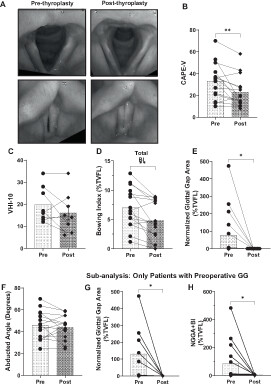
Quantitative measures of bowing index, normalized glottal gap area, and max abduction angle were collected from patient with age-related vocal atrophy before and after bilateral type 1 thyroplasty. Bilateral medialization thyroplasty resulted in improved vocal fold bowing, glottal gap, and CAPE-V scores. These findings suggest that bilateral thyroplasty improves vocal bowing and glottal gap area, and the improvement in vocal fold morphology and closure leads to improved voice quality.
Edge Enhancement Optimization in Flexible Endoscopic Images to the Perception of Ear, Nose and Throat Professionals
- Pages: 842-847
- First Published: 17 August 2023

Digital endoscopes are connected to a video processor that applies various operations to improve the image. One of those operations is edge enhancement that sharpens the image. Edge enhancement has a major impact on sharpness, noise, and the resulting perceived image quality. We conclude that ENT professionals benefit from this video processing and should verify if their equipment is optimally configured.
Bilateral Functional Electrical Stimulation for the Treatment of Presbyphonia in a Sheep Model
- Pages: 848-854
- First Published: 19 August 2023
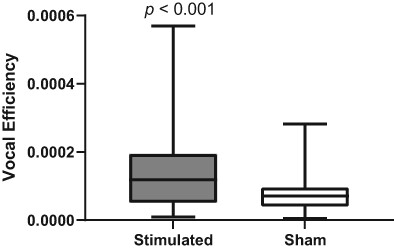
Bilateral functional electrical stimulation was applied to increase muscle volume and improve phonation characteristics of the aged sheep larynx. After 9 weeks of stimulation, an improvement in vocal efficiency as well as an increase in minimal muscle fiber diameter (type II fibers) was observed, compared with sham. Histology and gene expression analysis showed no significant muscle fiber type switching after stimulation.
MuRF-1 is Involved in Laryngeal Muscle Denervation Atrophy by Regulating G-Actin Ubiquitination
- Pages: 855-864
- First Published: 02 September 2023
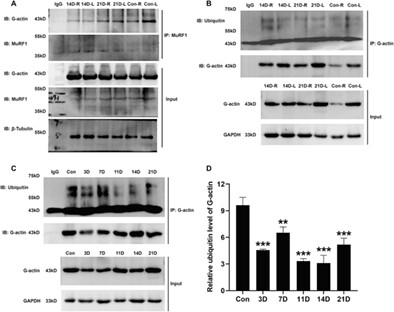
By using the rat model of unilateral laryngeal recurrent nerve transection injury, we report a novel molecular mechanism of MuRF-1-mediated internal laryngeal muscle denervated atrophy, that MuRF-1 may mediate the ubiquitination of G-actin, leading to a disequilibrium of G-actin and F-actin in denervated muscle tissues.
Decision-Making in the Treatment of Idiopathic Subglottic Stenosis: A Survey of Laryngologists
- Pages: 865-872
- First Published: 05 September 2023
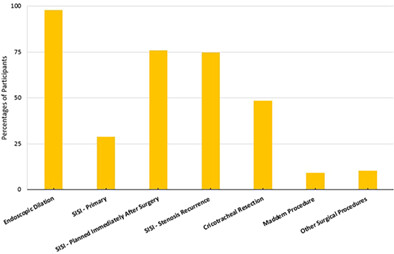
Survey finds heterogeneity in iSGS patient management, with the rise of in-office steroid injections as primary treatment. Maddern procedure and endoscopic wedge resections are rarely offered. Algorithms vary based on experience/outcomes, and standardization is needed to improve clinical outcomes as more studies emerge.
Training for Awake, Office-Based Laryngeal Procedures—The Laryngology Fellow's Perspective
- Pages: 873-881
- First Published: 04 September 2023
The Use of a Dehydrated Cellularized Collagen Matrix to Replace Fibrotic Vocal Fold Mucosa
- Pages: 882-893
- First Published: 08 September 2023
Case Report
Laryngological Symptomatology in Patients with Ehlers–Danlos Syndrome
- Pages: 894-896
- First Published: 28 June 2023
How I Do It
Post-Covid-19 Airway Stenosis: Tracheal Resection-Anastomosis Using The Tritube® Ventilation
- Pages: 897-900
- First Published: 19 July 2023
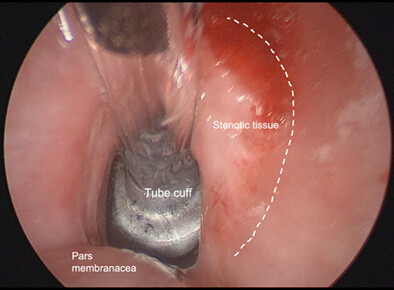
We present a video of a tracheal resection and anastomosis performed on a patient affected by A-shaped tracheal stenosis. The condition was a consequence of a percutaneous tracheostomy following a Sars-Cov2 infection. Airways management during the surgery was obtained with the Tritube®, an innovative device with a very small lumen that combines stable lung parameters and good visualization of surgical field. Laryngoscope, 134:897–900, 2024
Olfaction-Chemosensation
Original Report
Do Children with Previous COVID Infection Have Hyposmia?
- Pages: 901-906
- First Published: 03 November 2023
Otology-Neurotology
Original Reports
Utility of Extended High-Frequency Audiograms in Clinical Practice
- Pages: 907-910
- First Published: 27 July 2023
The Rate of Occult Lesion Diagnosis in a Large Bell's Palsy Cohort
- Pages: 911-918
- First Published: 20 July 2023

In one of the largest Bell's palsy cohorts to date (N = 2420), we characterize occult lesion diagnosis rates after initial Bell's Palsy diagnoses. We identified a 9.7% occult lesion diagnosis rate at a median 12 months post-Bell's Palsy diagnosis. This study underscores the importance of timely workup for occult lesions in cases of acute facial palsy with no signs of recovery.
Long-Term Perceived Benefit of Pediatric Cochlear Implant Users with Unilateral Hearing Loss
- Pages: 919-925
- First Published: 19 July 2023
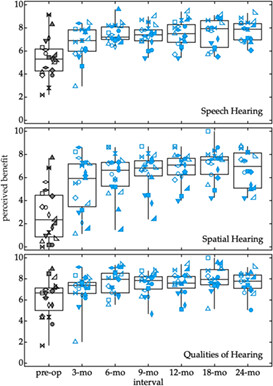
Pediatric patients with moderate to profound sensorineural hearing loss underwent cochlear implantation, and standard performance measures were combined with measures of perceived benefit (The Speech Spatial and Qualities of Hearing Questionnaire modified for children (SSQ-C)) at 3, 6, 9, 12, 18, and 24 months post-activation. Parents reported significant improvement in perceived abilities immediately post-activation which were maintained over the 2-year monitoring period. Standard performance measures were not correlated with perceived benefit via SSQ-C.
Predicting Acoustic Hearing Preservation Following Cochlear Implant Surgery Using Machine Learning
- Pages: 926-936
- First Published: 14 July 2023
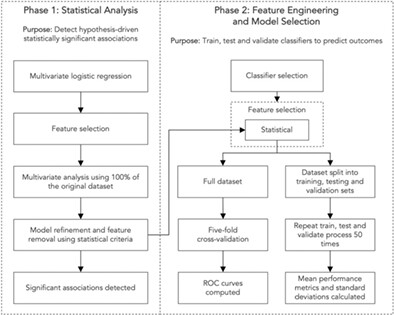
This study used supervised machine learning in order to identify demographic and audiometric variables predictive of acoustic hearing preservation following cochlear implant surgery. The machine learning classifiers demonstrated accuracy and utility in this task. Applying appropriately validated predictive models to clinical practice may facilitate improved shared decision making and treatment outcomes.
A New Floating Piezoelectric Microphone for Fully Implantable Cochlear Implants in Middle Ear
- Pages: 937-944
- First Published: 08 July 2023
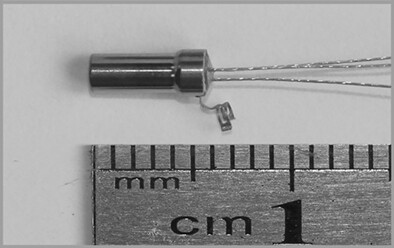
This study examined the sensitivity and effectiveness of a new floating piezoelectric microphone (NFPM) designed for totally implantable cochlear implants (TICIs) in animal experiments and clinical trials. The NFPM is effective and without obvious body noise, making it feasible as an implantable middle-ear microphone for TICIs.
Human Histology after Structure Preservation Cochlear Implantation via Round Window Insertion
- Pages: 945-953
- First Published: 26 July 2023
Pediatrics
Original Reports
Associations Between Social Vulnerability Indicators and Pediatric Tonsillectomy Outcomes
- Pages: 954-962
- First Published: 05 December 2023
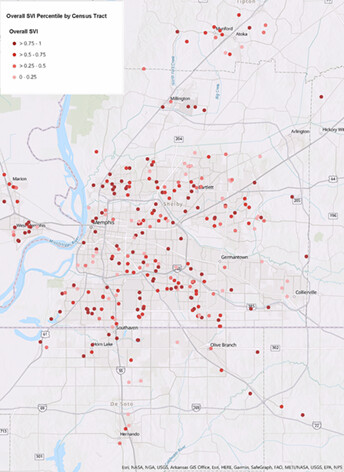
Our study investigated the impact of neighborhood-level social vulnerability on pediatric tonsillectomy outcomes. After controlling for known covariates and individual-level factors (e.g., age, gender, race, comorbidities, and obstructive sleep apnea), we found that a higher social vulnerability index (SVI) was a significant factor in predicting both readmissions and complications. This elevated risk has potential implications for management for patients living in disenfranchised neighborhoods.
Surgical Outcomes by Early Airway Endoscopy Findings after Pediatric Staged Laryngotracheoplasty
- Pages: 963-967
- First Published: 17 July 2023
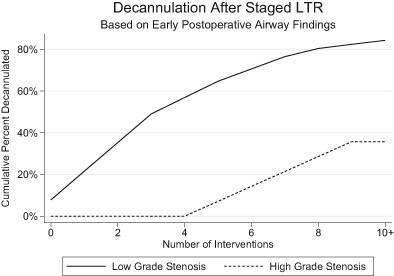
Double-Staged laryngotracheoplasty (dsLTP) is a procedure used to treat subglottic stenosis in the pediatric population, with decannulation being the ultimate goal of surgery. This study aims to determine how often initial postoperative airway endoscopy after stent removal predicts the likelihood of decannulation, time to decannulation, and number of endoscopic procedures needed after dsLTP. The study found that early airway findings correlate with likelihood of decannulation, and number of endoscopic procedures.
Tonsillotomy for Periodic Fever Syndrome: A Randomized and Controlled Trial
- Pages: 968-972
- First Published: 21 July 2023
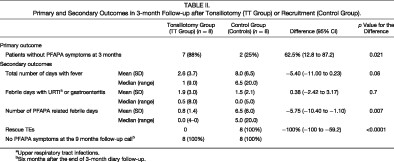
We randomized 16 PFAPA children in tonsillotomy group and control group (observation only). After 3 months of follow-up, 88% of the patients in tonsillotomy group and 25% in the control group were free from PFAPA flares (95% CI 13%–87%; p = 0.0021). Tonsillotomy was effective in treating PFAPA in this study.
Prevalence of Postpartum Depression in Mothers Presenting to a Pediatric Otolaryngology Clinic
- Pages: 973-976
- First Published: 18 July 2023
Case Report
Type 3 Laryngeal Clefts Presenting with Upper Airway Obstruction without Aspiration
- Pages: 977-980
- First Published: 12 July 2023
Sleep Medicine
Original Reports
Palate shape is associated with Unilateral Hypoglossal Nerve Stimulation Outcomes
- Pages: 981-986
- First Published: 06 September 2023

This is a retrospective cohort study of 332 adults to determine the association between soft palate shape and unilateral hypoglossal nerve stimulation (HNS) outcomes. Vertical palate shape and narrowing at the hard-soft palate junction are independently associated with lower HNS surgical success rates.
Case Report
Snoring Patterns During Hypoglossal Nerve Stimulation Therapy Up-Titration
- Pages: 987-992
- First Published: 19 June 2023
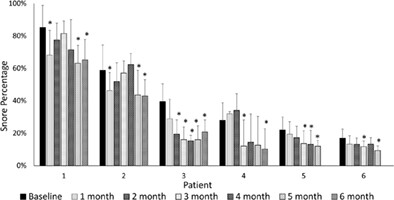
Longitudinal snoring changes can be captured using a mobile phone application. During hypoglossal nerve stimulator (HNS) therapy up-titration, increasing stimulation voltage was associated with reduced snoring frequency and intensity in this case series of six patients. Laryngoscope, 134:987–992, 2024
Thyroid, Parathyroid, and Endocrine
How I Do It
US-Guided Hydrodissection and a Low-Cost Indigenous Retractor Facilitate Endoscopic Thyroid Surgery
- Pages: 993-994
- First Published: 11 August 2023
Case Report
Arrested Descent of the Thyroid: A New Manifestation of Abnormal Thyroid Embryology
- Pages: 995-997
- First Published: 20 June 2023
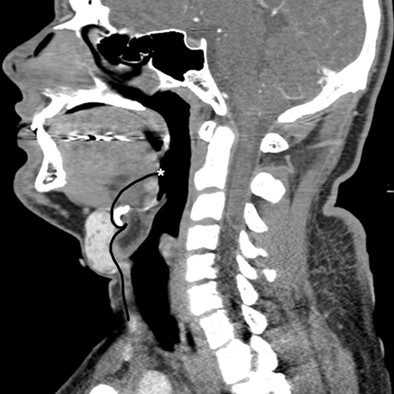
In this article, we review the normal embryology of the thyroid gland, categorize the ways in which this embryology can fail, and describe how those failures manifest clinically and radiologically. Finally, we describe a new manifestation of abnormal thyroid embryology. Laryngoscope, 134:995–997, 2024




